Please update your browser
Your current browser version is outdated. We recommend updating to the latest version for an improved and secure browsing experience.
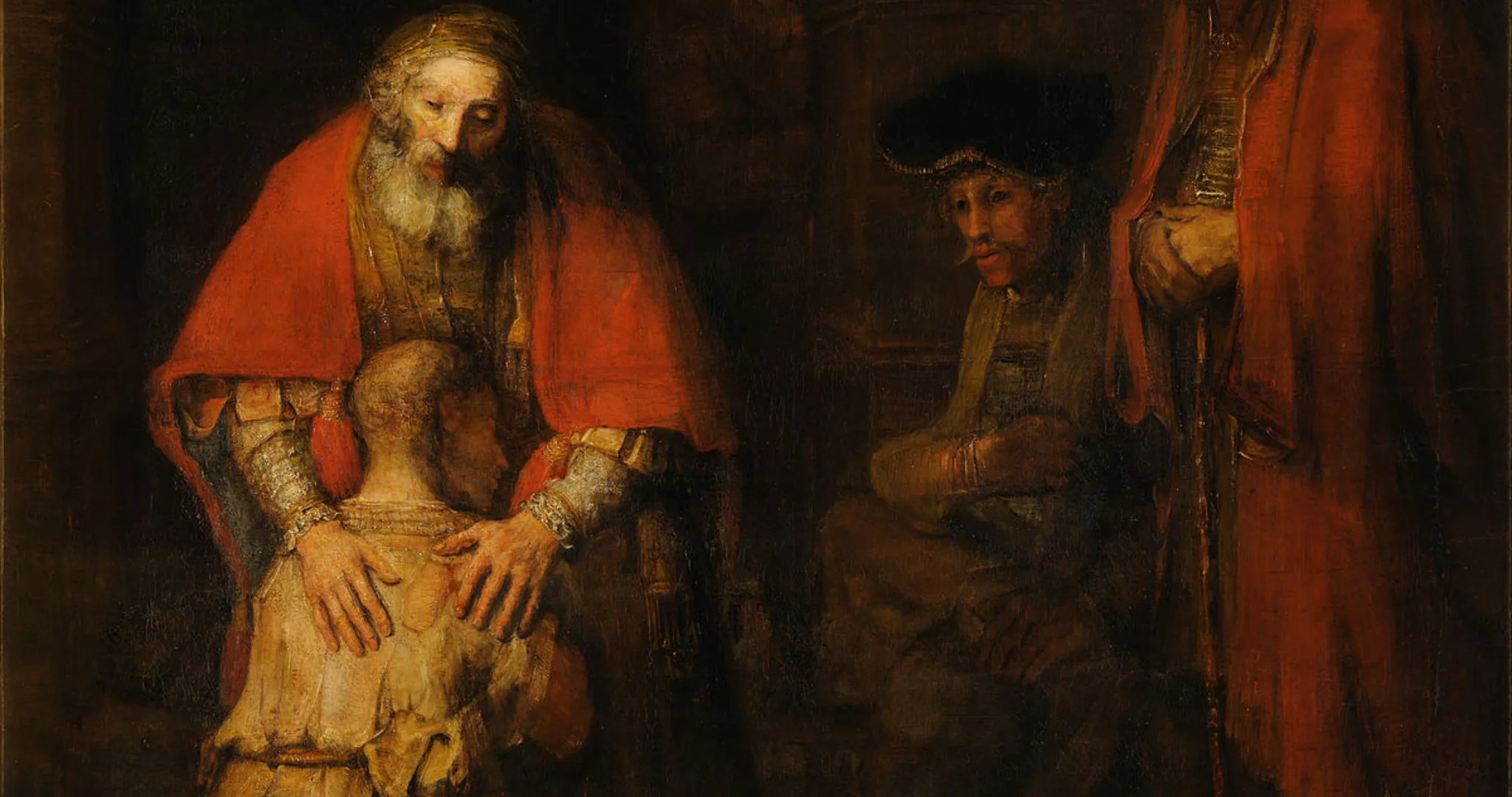
Rembrandt, Caravaggio, Velázquez, and The Supper at Emmaus
Rembrandt
Rembrandt’s 1628 Supper at Emmaus – which is the single greatest visual influence on James Gray’s Armaggedon Time (2022) according to cinematographer Darius Khondji – is one of the most astonishing, singular paintings in the history of art. The subject, which follows Luke’s Gospel in its depiction of the moment when oblivious disciples Luke and Cleopas realize they are in the presence of the risen Christ (Luke 24:13-35), is a traditional one that attained prominence among Baroque painters of the 17th century.
Rembrandt (1606-1669), Caravaggio (1571-1610), and Vélazquez (1599-1660) all painted the subject several times. In each case, the non-recognition of the disciples is related to the concordant scene in Mark 16:12 in which Christ “appeared in another form unto two of them.” By synthesizing narratives in this way, the painters were able to make their depictions into potent explorations of the meaning of vision and understanding (issues that resonated with the intense theological tenor of the post-Reformation era).
As the figures who stare indifferently at the meal make clear, what is required for the disciples and for the viewers is the capacity to grasp the visual codes that make epiphany comprehensible, to recognize the revelation of the sacred in the world.
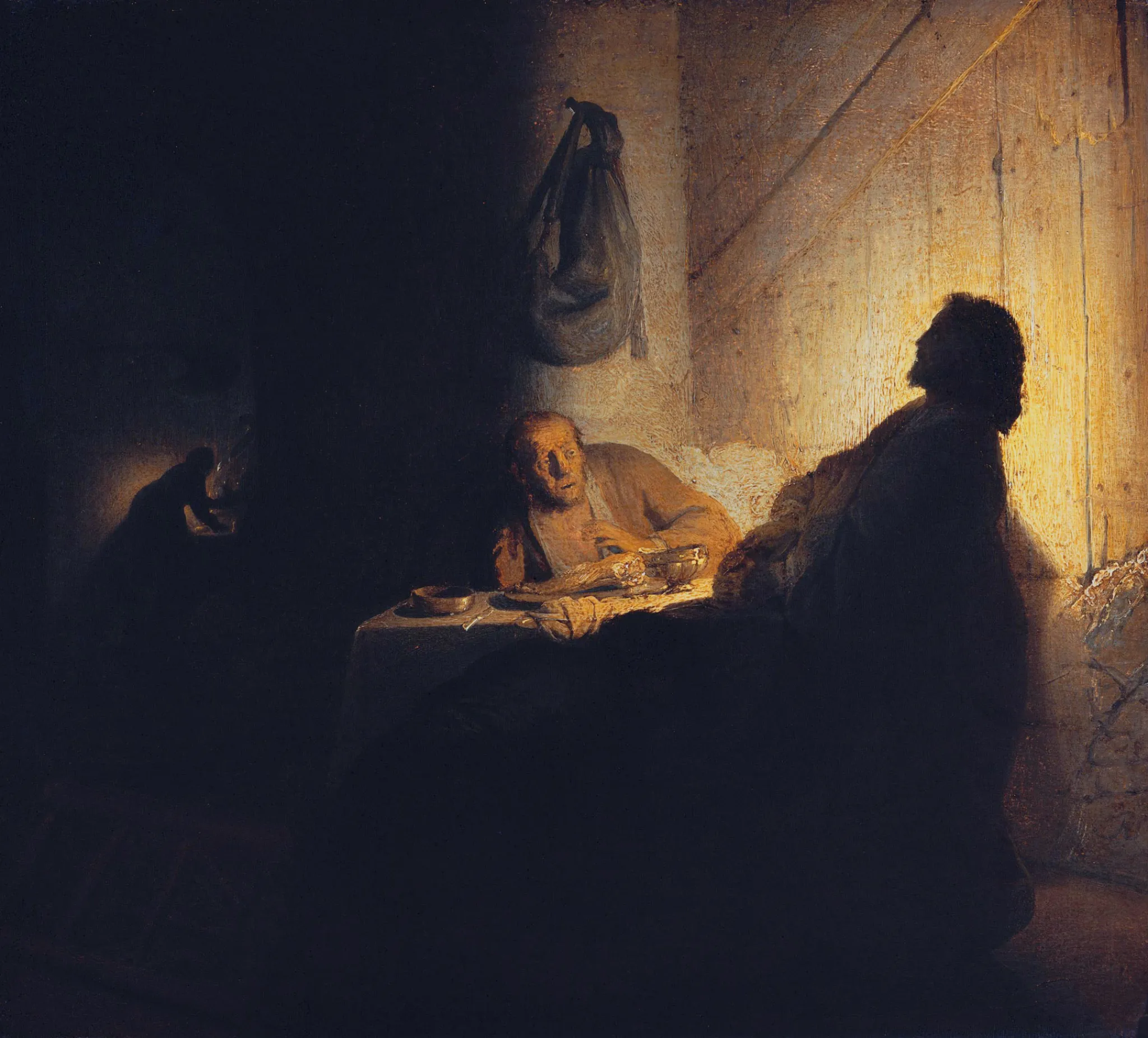
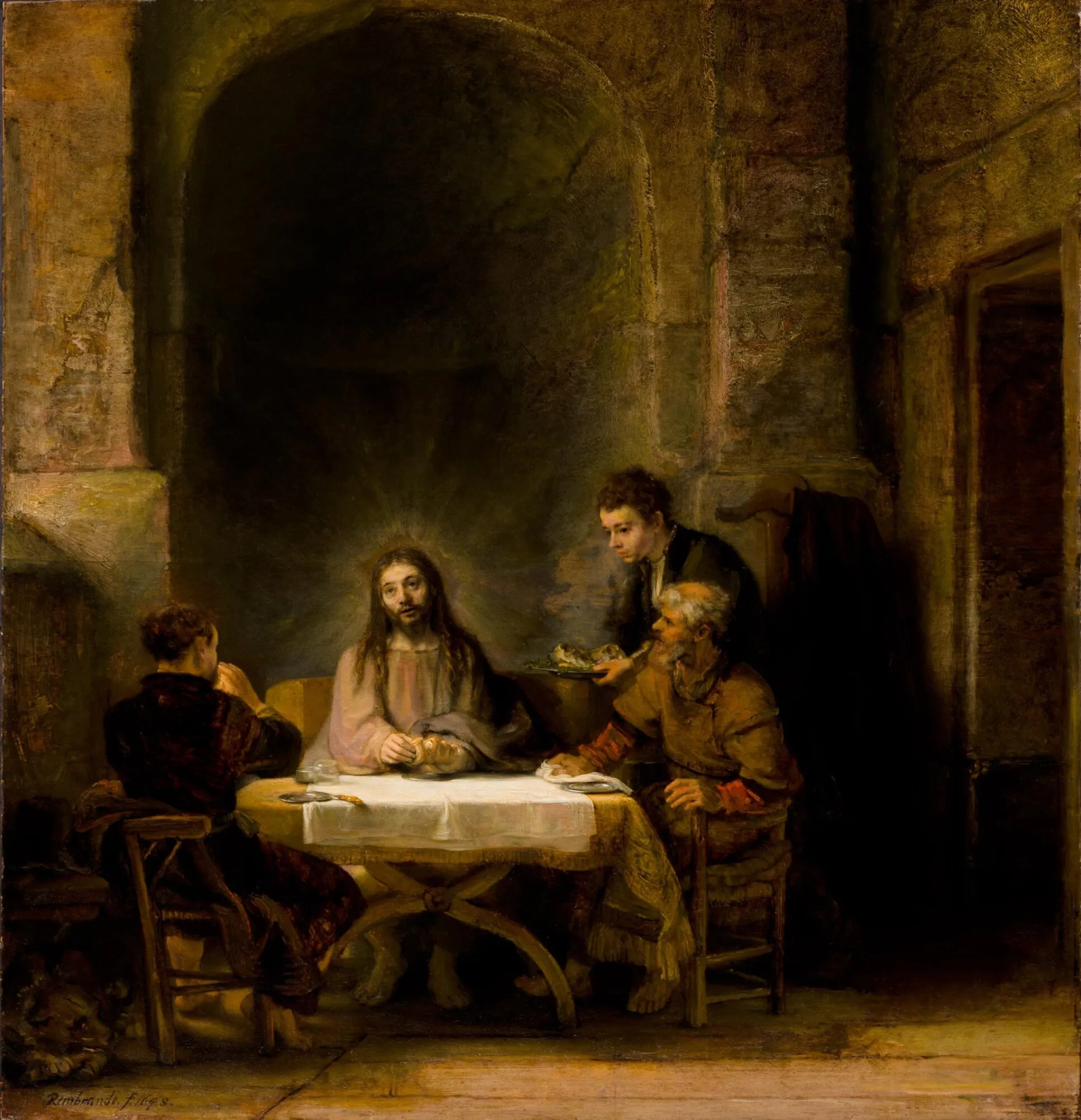
Caravaggio
Each of these three painters emphasizes different aspects of the scene. In both the painting in the National Gallery London and the one in the Pinacoteca di Brera in Milan, Caravaggio links the food on the table with the repetition of the gestures associated with the Last Supper to stress the encounter’s Eucharistic significance. The intense chiaroscuro of the paintings – with pools of darkness set off against partially illuminated figures – heightens the drama and encourages the viewer to participate in the act of seeing. This effect is reinforced in the London painting by the slight plunge of the table and the movement of the chair to the left from the foreground into the space occupied by the viewer.
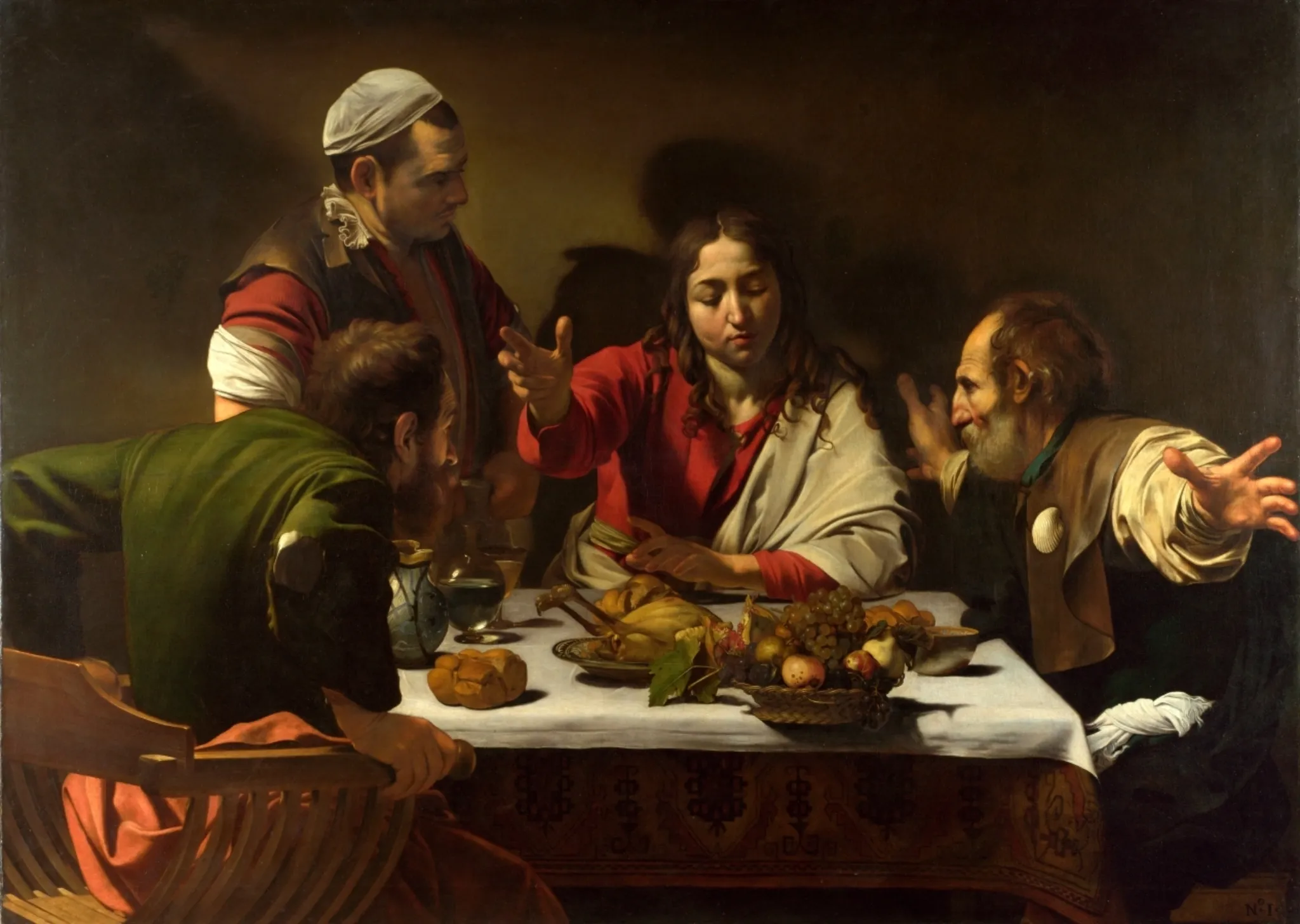

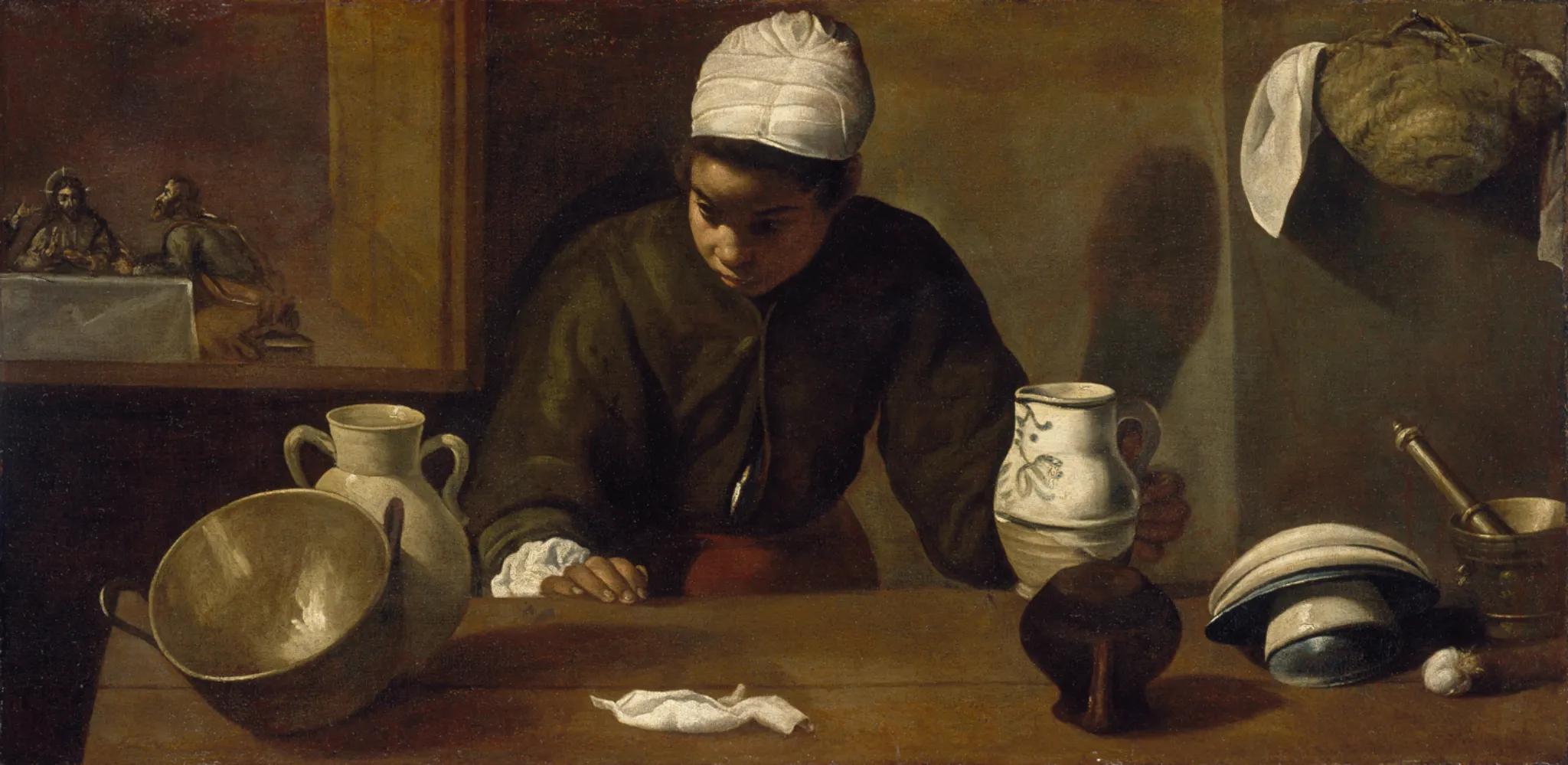
Velázquez
In his most haunting and enigmatic depiction, Vélazquez relocates the sacred scene into a painting-within-the-painting on the back wall and leaves open the question of how it relates to the seeing and understanding of the kitchen maid immersed in quotidian activity and the objects and spaces of daily life.
Rembrandt's Light
This same question is raised even more boldly by Rembrandt’s 1622 painting. Almost the entire left half of the painting is submerged in darkness, as is the foreground right plane, which largely obscures the figure of Christ. By eliminating the more theatrical gestures so central to Caravaggio’s paintings and forcing the viewer’s eye to acclimate to the extremely low levels of illumination before the scene can be apprehended, Rembrandt stresses the interior process of interpretation and recognition. As in both of the Caravaggio paintings, however, Rembrandt includes figures who seem completely unable to recognize the true importance of what is taking place, connecting careful viewing to spiritual insight.
Caravaggio painted directly on the canvas and worked every area continuously to ensure smooth gradations of light. Recent art historical analyses – making use of new methods of empirical study – have made it clear that Rembrandt instead began painting backgrounds only gradually moved to the foregrounds [i]. Combining this method with a highly restricted palette, the meticulous delineation of the effects of light on textures and surfaces including skin, and the use of varied forms of brushstrokes enabled Rembrandt to create a unique sense of space whose apparent roughness deepened the impression of realism and heightened the stakes of seeing.
[i] Ernst Van de Wetering, Rembrandt: The Painter at Work (Amsterdam: Amsterdam University Press, 2008), 149

Cinematic Darkness
Like cinematographers Gordon Willis and Vittorio Storaro, Khondji experimented with both on-set lighting techniques and post-production development processes to create comparable levels of darkness.









